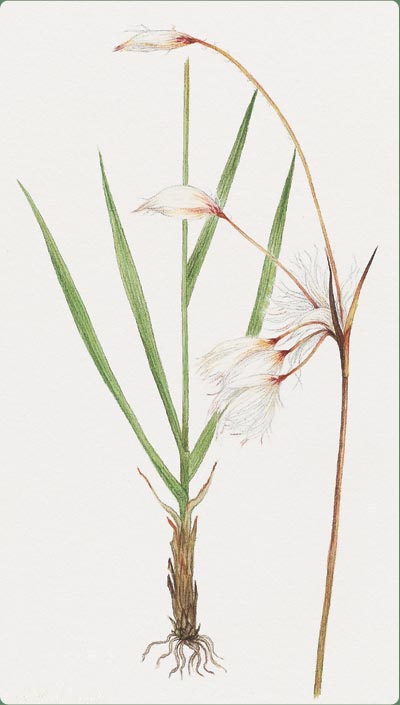Eriophorum latifolium Eriophorum latifolium Hoppe - Broad-leaved cotton-grass
Family: Cyperaceae This species is widely spread in the Eurasian area. In our mountains it occurs especially at an altitude up to 2,000-2,200 metres.
The smooth triangular stem can be 70-80 cm high and its light green leaves are 4-6 mm. wide. The inflorescence is composed of 3-12 hanging spikes supported by a 1-2 cm long peduncle with short hairs. After fertilization, the bristles surrounding the flower ovary become 1-2- cm long so as to form the characteristic white plumes which are easily scattered by the wind.
The species is hygrophilous and heliophilous and it is present in many open habitats characterized by soils rich in water, on a substratum rich in calcium such as alkaline fens and low productiveness moist grassland, resurgence habitats and the banks of brooks. In the Friuli resurgence area the species is present as a relict of the microthermal plants which came to the plain in the ice age.
The species occurs in moist areas of the Schoenus nigricans (Erucastro-Schoenetum) alkaline fen, on a soil which is not particularly poor. Not many years ago, the species was very common in the suitable habitats and its flowering was characteristic of the area in the period from May to June. Nowadays, because of the biotype destruction and, of the recent climatic changes, the species is extremely rare and even the most endangered, together with the Gentiana verna, among the ones of the Resurgence area. Indeed, unlike other ice age relicts of the area which are endangered because of the water table lowering, the species has not improved, not even with the new mowing as it suffers hot and dry summertime which has been typical since the '90s.

G. Bolognini © |

|